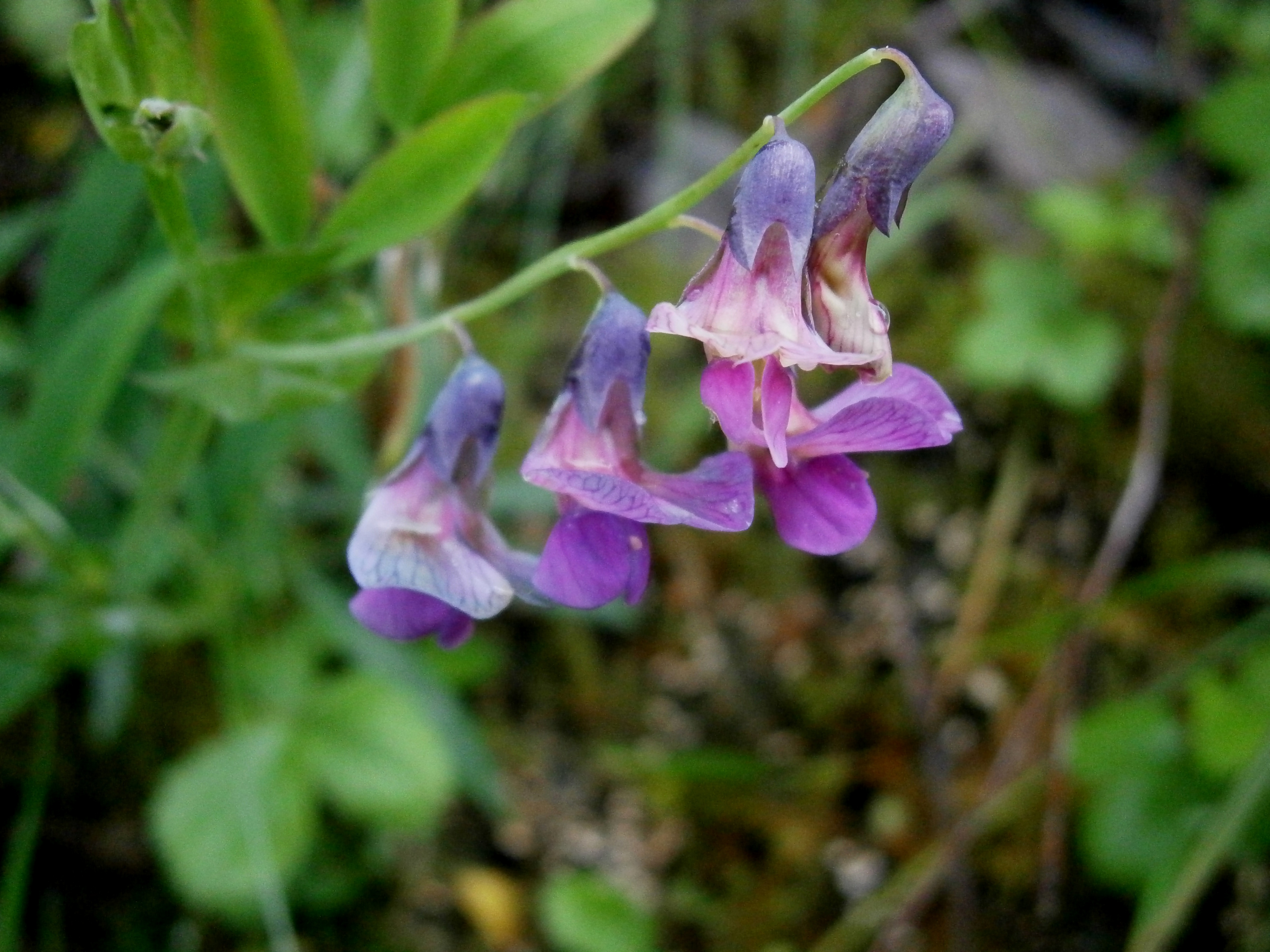Lathyrus linifolius
Mountain - pea ( Lathyrus linifolius )
The mountain - pea ( Lathyrus linifolius; Syn. Lathyrus montanus Bernh ) is a fairly widespread in Central Europe, representatives of the Fabaceae ( Faboideae ). It blooms from April to June, often again in the fall.
Shoots and leaves
The mountain - pea is a perennial herbaceous plant with thin, stalk round, nodular base axis, starting from the bulbous swollen bottom runners. The whole plant is bare. The stem is prostrate, ascending or erect, about 15 to 40 cm long, simple or down a steep way branching, thin, wide, with two distinct wings and with these about 3 to 4 mm.
The leaves are 5-7, shorter or longer than the Stängelinternodien, have 2 or 3 pairs of leaflets and a narrow winged, expiring in a most significant Grannenspitze spindle. The leaves are usually oblong- elliptic to lanceolate, rarely breitelliptisch or ruler, about 2-5 cm long and 3-8 mm wide, short- pointed or rounded and apiculate and equipped with 3-7 weak, reticular associated longitudinal nerves. They are on both sides matt, dull dark green upper side and hand dyed bright bluish green.
The stipules are more or less as long to twice as long as the petioles, semi- arrow-shaped, about as wide as the leaflets, usually with short ears and often serrated weak.
The mountain - pea varies especially in the width and length of the leaflets.
Flowers, fruits, seeds
The racemose inflorescences are about as long to almost twice as long as the leaves, have a thin, usually bogige axis and 3-5 about 11 to 15 mm long flowers. These sit at 2-4 mm long stalks in the axils of bracts on small scales stunted. The calyx is bell-shaped, bagged out something on the back, purple or purple-brown crowded and has broadly lanceolate teeth. The lower are about as long as the tube and much longer than the upper one. The crown is light purple, more or less at the base greenish, light blue to greenish when fading and becoming easily rust when drying. The flag has an almost circular, sharply upright plate. The boat is bent almost at right angles.
The legumes are almost cylindrical, about 3 to 4 cm long and 4-5 mm wide, beaked short, smooth, mature leather- brown to black-brown and about 10 - SAMIg.
The seeds are almost spherical, smooth and ocher to reddish yellow.
The species has the chromosome number 2n = 14
The variety Lathyrus linifolius var linifolius shows pronounced narrow linealische Papers
Breitelliptisch to ovate leaflets can be found in the form of Lathyrus montanus var linifolius f obtusifolius
Ecology
The mountain - pea is a rhizome - Geophyt and a Hemikryptophyt.
The flowers are wilting when a color change from light purple to light blue to greenish, drying, they will even rust easily. This color change is a decrease in production of nectar is connected. It was assumed earlier, adaptive insects would recognize the connection and therefore avoid older flowers, but could lower the visiting flowers are also increasingly easier with the waste of the aging Corolla in context.
In the bottom of developed fruits ripen from there; this is called Erdfrüchtigkeit or Geokarpie.
Distribution and habitat requirements
Lathyrus linifolius comes in Europe, especially in the western and central parts. To the east it is something rare, just to the north of the Iberian Peninsula.
In Germany (especially in Bavaria) Platterbsenart this is fairly common. However, it is missing in the northwestern plains and largely south of the Danube.
The mountain - pea grows usually in droves Gentiles and meadows, in light acidic oak woodland or oak-beech forests, forest edges and in open woods. It prefers mostly low lime to lime-free soil. Phytosociological it is in central Europe Ordnungscharakterart the Quercetalia roboris, comes at higher altitudes but also in association Violion caninae or Polygono - Trisetion ago.
Use
The sweet, slightly chestnut -like tasting, astringent Rhizomknollen were formerly against diarrhea, bleeding and ulcers in use. In Scotland they are crushed, subjected to a fermentation with yeast and from an alcoholic beverage prepared. In addition, they were also eaten dry in high - Scotland and have formed a popular travel supplies. The Gaelic name carra - Meille ( lit. "Honey nodes") or cairmeal etymologically refers to a different sweet plant, namely the sweet flag ( Acorus calamus ), and together with this the basis for the word caramel.










